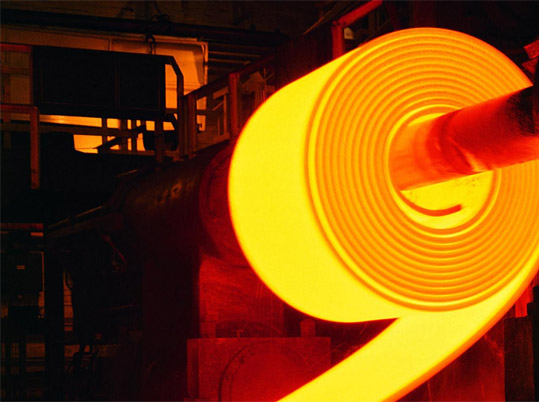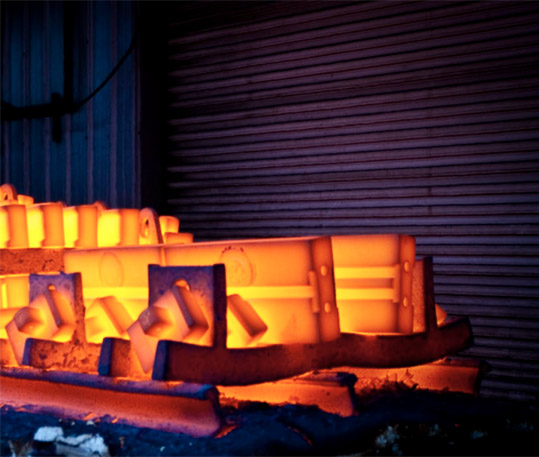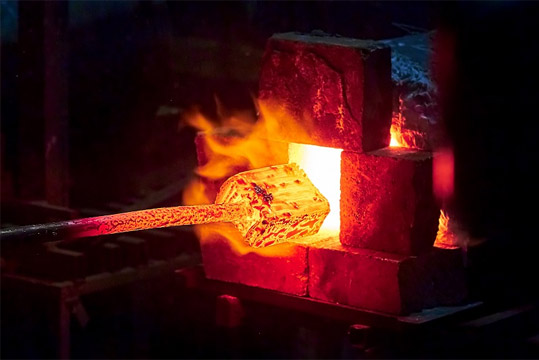Tempering is a heat treatment process that reheats the quenched metal workpiece to an appropriate temperature, keeps it for a period of time, and then slowly cools it. Its main purpose is to reduce the internal stress of the workpiece after quenching, improve toughness and plasticity, reduce the brittleness of the material, and obtain more uniform mechanical properties.
Heating: Reheat the quenched workpiece to a tempering temperature below the critical temperature. The tempering temperature varies for different materials and requirements. Usually, the low tempering temperature is 150-250℃, the medium tempering temperature is 350-500℃, and the high tempering temperature is 500-650℃.
Hot-keeping: The workpiece is kept at the tempering temperature for a certain period of time to ensure that the internal structure is fully transformed. The length of the heat-keeping time depends on the size and requirements of the workpiece, and is generally calculated according to the thickness of the workpiece, and is kept for 5-10 minutes per millimeter.
Cooling: After heat-keeping, the workpiece is usually slowly cooled to room temperature, and the cooling medium can be air or furnace cooling. If there are special requirements for materials or workpieces, oil cooling or water cooling can be used.

Preparation stage:
Pretreatment of workpieces: Before tempering, the workpieces should be thoroughly cleaned to remove oil stains, scale and other impurities that may remain during the quenching process to ensure uniform heating.
Choose appropriate heating equipment: Usually a resistance furnace, box furnace or air circulation furnace is used for heating. For precision workpieces, an atmosphere protection furnace can be used to avoid oxidation and decarburization of the workpiece during heating.
Tempering operation:
Low-temperature tempering (150-250℃): Mainly used to reduce internal stress after quenching while maintaining high hardness. Suitable for tools, bearings, etc. that require high hardness and wear resistance. After low-temperature tempering, the hardness of the material does not change much, but the toughness and plasticity are improved.
Medium-temperature tempering (350-500℃): Used to improve the comprehensive mechanical properties of the workpiece so that it has a certain hardness and toughness. Usually used for workpieces such as springs and bolts that require strength, toughness and plasticity.
High temperature tempering (500-650℃): Mainly used to reduce hardness, improve toughness and ductility, suitable for workpieces that require higher plasticity and toughness, such as structural steel parts and large-sized forgings.
Cooling method:
Air cooling: Suitable for most workpieces, cooling is slow, and can effectively reduce internal stress.
Oil cooling/water cooling: Generally used for large pieces or workpieces with special requirements, which need to be cooled quickly to prevent excessive softening.

Choice of tempering temperature: The choice of tempering temperature is the key. If the temperature is too low, the internal stress cannot be effectively eliminated, and the workpiece remains brittle and hard; if the temperature is too high, the hardness will drop too much and the required strength cannot be achieved. Therefore, the temperature should be carefully adjusted according to the purpose of the workpiece and the properties of the material.
Prevent too long insulation: Although the insulation time has a significant effect on the tempering effect, too long insulation may cause uneven changes in the structure and affect the material properties. The appropriate insulation time should be controlled according to the thickness and properties of the material.
Prevent oxidation and decarburization: If the tempering process is carried out in an oxidizing atmosphere, an oxide layer or decarburization may appear on the surface of the workpiece, which will affect the surface quality. Vacuum tempering or atmosphere protection tempering can be used to prevent these problems.
Avoid deformation caused by rapid cooling: For some workpieces with complex shapes or large sizes, excessive cooling speed may cause deformation. Therefore, the cooling process should select appropriate cooling media and speed according to the requirements of the workpiece
Ensure inspection after tempering: After tempering, the workpiece usually needs to be tested for hardness and mechanical properties to ensure that it meets the design requirements. If necessary, non-destructive testing such as ultrasonic testing can also be performed to check for cracks or other defects.

Tempering is widely used in the manufacture of various mechanical parts and tools, such as:
Tool steel: After quenching and low-temperature tempering, it has high hardness and good wear resistance, which is suitable for the manufacture of cutting tools and molds.
Spring steel: Medium-temperature tempering can give spring steel good elasticity and toughness, which is used for springs and elastic elements.
Structural steel: High temperature tempering is used to reduce hardness, improve toughness and plasticity, making it suitable for parts that bear large impact loads.
Tempering is an important process to eliminate internal stress after quenching and improve the comprehensive mechanical properties of the workpiece. By properly selecting the tempering temperature and holding time, the hardness, toughness and plasticity of the material can be adjusted to obtain ideal performance. In actual operation, the temperature, time and cooling rate should be strictly controlled, and the appropriate process parameters should be selected according to the use conditions and requirements of the workpiece to ensure the stability and consistency of product quality.